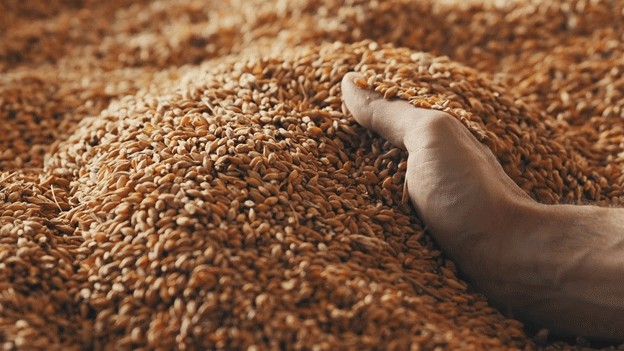The 2023-2024 agricultural season in Morocco has been devastated by a severe drought, resulting in one of the poorest grain harvests in recent memory. With only 31 million quintals harvested, the crop yield represents a 43% decrease from the previous year’s 55 million quintals and is a far cry from the 103 million quintals produced in 2019. This sharp decline highlights the severity of the drought, which left only 237 mm of rainfall for the season—31% below the average of 349 mm.
The drought has hit particularly hard in Morocco’s key agricultural areas, like the Rabat-Salé region, where farmers report drastically reduced yields. Housni Belhoucine, a farmer from Ameur Seflia, recalls how abundant wheat harvests were just a few years ago. Today, yields have dropped to as low as 10 sacks per hectare, compared to the 60 sacks typically harvested in better times. The ongoing drought has not only diminished crop production but also shaken the confidence of farmers, many of whom are now questioning the future of cereal cultivation in the region.
Morocco’s cereal-growing area was also significantly affected. While 2.5 million hectares were planted with cereals, only 1.85 million hectares were harvested, leaving vast stretches of farmland barren. As the country faces its sixth consecutive year of below-average rainfall, discussions are emerging about whether it is still feasible to grow wheat in Morocco’s arid climate. Some farmers are considering switching to more drought-resistant crops or even sheep farming, which could offer more reliable income in increasingly dry conditions.
This sharp decline in domestic grain production has led to an alarming rise in Morocco’s grain imports. By October 2023, the International Grains Council (IGC) estimated that Morocco’s wheat imports would rise to 5.40 million tons, a significant increase from the previous year’s 4.80 million tons. French wheat has become one of the main imports, with 2.8 million tons entering Morocco in 2022-2023 alone. The financial burden of these imports is staggering. In 2023, Morocco spent 19.3 billion dirhams (1.9 billion euros) on wheat imports, a figure that could climb higher as the country continues to battle the effects of climate change.
For Morocco’s farmers and agricultural policymakers, the key question is how to make cereal production viable in such harsh conditions. Some experts suggest turning to strategies used in dry-farming regions like Australia, where farmers rely on innovative techniques such as no-till farming and soil compaction reduction to conserve moisture. The International Center for Agricultural Research in the Dry Areas (ICARDA), now based in Settat, Morocco, is leading research into drought-resistant wheat varieties and conservation practices that could help Moroccan farmers maintain production levels even in low-rainfall years.
These techniques, which include maintaining straw cover on the soil to reduce evaporation and improve root-level moisture retention, have shown promise. In Australia, such methods have allowed farmers to retain up to 75 mm of rainfall in the soil, potentially transforming Morocco’s agricultural landscape. However, adopting these practices requires a cultural shift. Morocco’s traditional cereal farmers, who have relied on wheat for generations, may find it difficult to transition to new methods or crops. Moreover, in periods of drought, straw is in high demand as livestock feed, making it difficult for farmers to leave enough on the soil for moisture retention.
While research and innovation offer hope, Morocco’s agricultural sector faces an urgent challenge. Without immediate and widespread adoption of drought-mitigation practices, the viability of cereal farming in non-irrigated areas could be at risk. The impact of climate change is accelerating faster than Morocco’s ability to adapt its farming systems, threatening the country’s long-term food security.
Morocco’s grain sector is at a crossroads. The devastating drought has exposed the vulnerability of traditional farming practices in the face of climate change. To safeguard the future of cereal production, Moroccan farmers must embrace innovative farming techniques and drought-resistant crop varieties. However, the transition will require significant support from research institutions, government agencies, and the farming community to ensure the long-term sustainability of agriculture in the region.
Error




